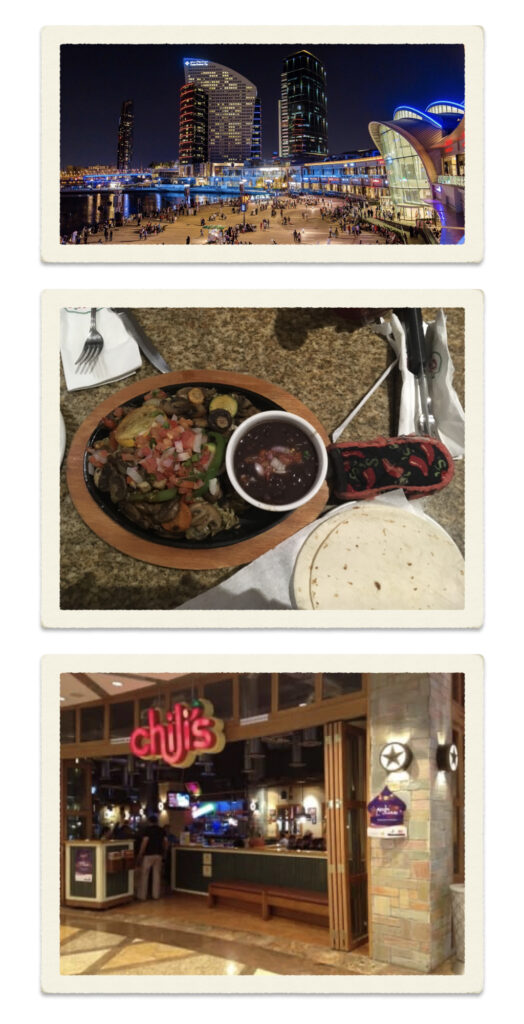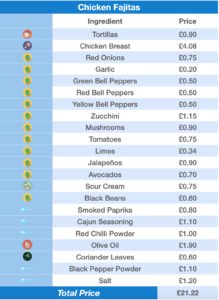
What’s In A Name
Country of Origin – United States of America
Region – Texas
So, you’re telling me, if I make Mexican food in Texas, it’s not really Mexican but it’s Tex-Mex? Is it then Mex-Tex if I make Texan food in Mexico?
Fajitas – a Tejano coined term for diminutive strips of meat (commonly beef skirt) – were first introduced to the world in the 1930s when Vaqueros (Mexican cowboys) were paid in cow meat trimmings for a hard day’s work on the ranch. These daily wages were the source of inspiration for the fajita, as they were often cooked over a campfire/grill in order to feed their families.
Despite the fajita being a staple in many a butcher/cowboy household, the dish remained in culinary obscurity for over 30 years. This is was predominantly due to the scarcity of readily available skirt steaks.
It wasn’t until the late 1960s, when local Austin meat market manager – Sonny Falcón – opened the first ever recorded commercial fajita concession stand, that the fajita gained culinary prominence. By the 1990s, the fajitas had become a regular on Mexican fast food menus and in American diners. Sixty years since its introduction, the dish had truly evolved from thin strips of meat to a hearty wrap of sizzling meat, vegetables, sauces, and dips.
Talk about a late bloomer, eh?!

Our Connection
Where – Chili’s, Dubai, United Arab Emirates
When – April, 2017
Let me be clear! Once I’m back from my first trip to Mexico or Texas – should it ever happen – I will make sure that updating this section will be at the top of my to-do list (post unpacking, obviously!)
Chili’s (yes, without the extra L) was, once upon a time, my go-to Mexican diner in Dubai, whether it be a casual meal with family or celebrating birthdays with friends. So, you could say this section has a lot to do with nostalgia than it does the actual authenticity/quality of the meal. Though, I would say, it wasn’t by any standards a poor meal. If anything, that statement does do it a great disservice!
Tacos or Fajitas? That really is the dilemma isn’t it? Personally, I’m more of a taco guy than a fajita man. Yup, you’re right. I’m just too lazy to make my own meal. If I’m going out to eat, I expect the entire meal to be made before it lands on my table. I don’t want to have to do the messy work. Leave the DIY bit to IKEA, Mexico!
It’s no surprise with that attitude that it took me quite a while before I actually ordered a fajita from a diner that I frequently visited for some Tex-Mex grub. One of the few benefits of ordering a fajita is that it works best as a sharing plate. With my cousins, aunt, and uncle sat at the table, the fajita was the obvious choice. As it arrived at our table, the vegetables sizzling away on the hot plate, I thought “Do you know what? I could be persuaded to change my mind”!
I haven’t, if you’re still wondering! I’m still a taco guy, but on that rare occasion that I do feel like I need to earn my meal, I would not think twice before ordering a fajita. Now, that’s progress! Or, I could just make it at home and pop over to Chili’s for a Molten Lava Cake for a sweet ending!
Chicken Fajitas
Description
"So you're telling me if I order the Fajita I get to choose how much meat, veggies, guacamole, salsa, and sour cream I can put in my tortilla and then I get to wrap it up myself? So, in other words, they're DIY (Do-It-Yourself) Tacos, right?"
Ingredients
Chicken Filling
Vegetable Filling
Black Bean Salsa
Garnishes
Instructions
Chicken Marination
-
Slice the chicken breasts1 into medium-length strips2. Add them to a large bowl
-
Marinate the chicken in smoked paprika, cajun seasoning, salt, black pepper powder, and the juice of half a lime. Drizzle olive oil in the bowl and mix thoroughly to ensure that each chicken strip is well coated in the marinade
-
Leave it to rest for at least one hour3
-
Whilst the chicken is marinating, it's time to turn our attention to making the other components of the Fajita
Black Bean Salsa
-
Peel, and finely chop the red onion and cloves of garlic. Core, and dice a tomato. Roughly chop the slices of jalapeño
-
Drizzle a teaspoon of olive oil into a heavy-bottomed saucepan and bring it over a medium heat
-
Once the oil is warm, add the chopped onions and garlic to the pan and sauté until the onions turn translucent
-
Add the diced tomatoes to the pan and continue to sauté for 1-2 minutes
-
Empty a tin of black beans4 (including the water) in to the pan and stir until the ingredients all combine. Season the pan with a few pinches of salt
-
Add the chopped jalapeños and squeeze the juice from half a lime into the pan. Continue to stir until the water reduces and reaches a slightly thick gravy-like consistency
-
Once the black bean salsa is ready, take the pan off the heat and pour the salsa into a large serving bowl. Leave on the side to cool down
Vegetable Filling
-
You can do this step whilst simultaneously cooking either the black bean salsa or the chicken
-
Peel and slice the red onion and cloves of garlic. Core and julienne the bell peppers. Julienne the zucchini (with the skin on). Slice the mushrooms
-
Drizzle a tablespoon of olive oil into a large sauté pan and bring it over a medium-high heat
-
Once the oil is hot, add the sliced onions and garlic. Sauté until the onions turn translucent
-
Add the bell peppers and zucchini to the pan. Continue to sauté until the bell peppers and zucchini start to soften slightly
-
Add the mushrooms and continue to sauté until they start to wilt and shrink. Season the vegetables with a generous pinch of black pepper, salt, and red chilli powder
-
Drain any residual water that might be in the pan due to the mushrooms and zucchini. Lower the heat to a minimum to keep the vegetables warm while you cook the chicken
Chicken Filling
-
Drizzle a tablespoon of olive oil in a separate5 sauté pan6 and bring it over a high heat
-
Once the oil is hot, add the marinated strips of chicken breast into the pan, one batch at a time7
-
Ensure that outsides of the chicken strips are seared, golden brown, and slightly charred, while they are cooked through inside8
Garnish
-
Slice the avocado through the middle. Remove the pit, scoop out the avocado flesh and slice into thin, even slices
-
Bring a flat-bottom pan over a medium heat. Place the tortillas9, one at a time, in the pan and heat them until each side turns slightly golden brown
-
Wash and chop a fistful of coriander leaves. Slice a lime into tiny wedges
-
To Serve (per serving): There are two ways of serving the Fajitas -
- Serve each component separately - Serve the tortillas, vegetable filling, pan-fried chicken strips, black bean salsa, guacamole, and sour cream on separate plates. Each diner can serve themselves - creating their own Fajitas, as they prefer.
- Serve as filled - Place one warm tortilla on the plate. Add a spoonful of the vegetable filling in the centre. Add a few pieces of the pan-fried chicken strips over the vegetables. Pour a spoonful of black bean salsa over the chicken. Garnish with a few slices of avocado, a dollop of sour cream, and a few chopped coriander leaves. Serve with a small wedge of lime.
- Serve each component separately - Serve the tortillas, vegetable filling, pan-fried chicken strips, black bean salsa, guacamole, and sour cream on separate plates. Each diner can serve themselves - creating their own Fajitas, as they prefer.
Note
1. Alternatively, you can use boneless chicken thighs instead of chicken breasts.
2. If you are planning on grilling the chicken breast, then do NOT slice the breasts into thin strips at the start. Rather marinate the breasts as is (whole), and slice them just before serving.
3. Ideally, you would like to marinate your diced chicken for 24 hours (or overnight) if possible. However, if there is a time constraint, then let it marinate for a minimum of 1 hour.
4. Tinned black beans work best here. Some manufacturers sell black beans submerged in salt water. If you do buy those brands, make sure to taste the salsa before adding additional salt as you don't want to over-season the salsa.
5. If you don't have too many pans, or if you want to save up on the washing, you can transfer the vegetable filling to another plate, and use the same sauté pan to cook the chicken.
6. If you are planning to grill the chicken breast, you can either use the oven or an iron-cast griddle or a normal sauté pan.
7. Ensure that you cook the chicken in batches so that the pan does not get too overcrowded. Overcrowding the pan will lead to the chicken being boiled and absorbing more fat rather than it being seared and attaining a nice golden brown skin.
8. To test whether the chicken is cooked through, pierce through the biggest chunk using either a fork or a tong. The insides should be glistening white without any hint of pink (raw).
9. For this recipe, I used store-bought flour tortillas. You can choose to make them yourself, if you have the time. Alternatively, you can use either store-bought or homemade corn tortillas.
10. The prices of the ingredients (table below) are only rough estimates and are subject to change!
11. As certain ingredients are common household items - salt, pepper, oil - you may not be required to purchase them, and so the cost of preparing this dish is lower.





